How can I make eco-friendly choices in my busy life for a better future? Can living sustainably really be doable? Does it really make a significant impact??
Now STOP, don’t panic and keep on reading because:
Our guide, packed with 101+ tried-and-true tips for a sustainable life, is your go-to for real solutions and a dose of inspiration. Consider it your personalized roadmap to embracing sustainability, designed to fit into your busy life seamlessly.

Defining Sustainability: A Holistic Perspective
Imagine sustainability as a three-legged stool, where each leg is essential for a sturdy and balanced seat. Let’s break it down in everyday terms:
- Taking Care of Our Home: Just like we tidy up our homes, sustainability is about keeping our planet tidy. Turning off lights, not wasting water, and recycling are all part of this.
- Fair Play and Kindness: Think of sustainability as being fair and kind to everyone. Just like we share toys and help each other, it’s about making sure everyone has enough and is treated fairly.
- Smart Money Moves: It’s like managing our pocket money wisely. We spend it on things we really need and save some for later. Sustainability means using our resources wisely, and not being wasteful.
When we balance these three – taking care of our home, being fair and kind, and using resources wisely – we’re living sustainably in a nutshell.
Why Sustainable Living Matters in 2024
- The Urgency of the Times: 2024 calls for action. Our planet needs us more than ever, and sustainable living is our response to the urgent environmental challenges we face.
- Empowering Individuals: Sustainable living isn’t just a buzzword; it’s your power to make a difference, starting right now.
- Collective Impact: When we all make conscious choices, we create a wave of change that impacts the world positively.
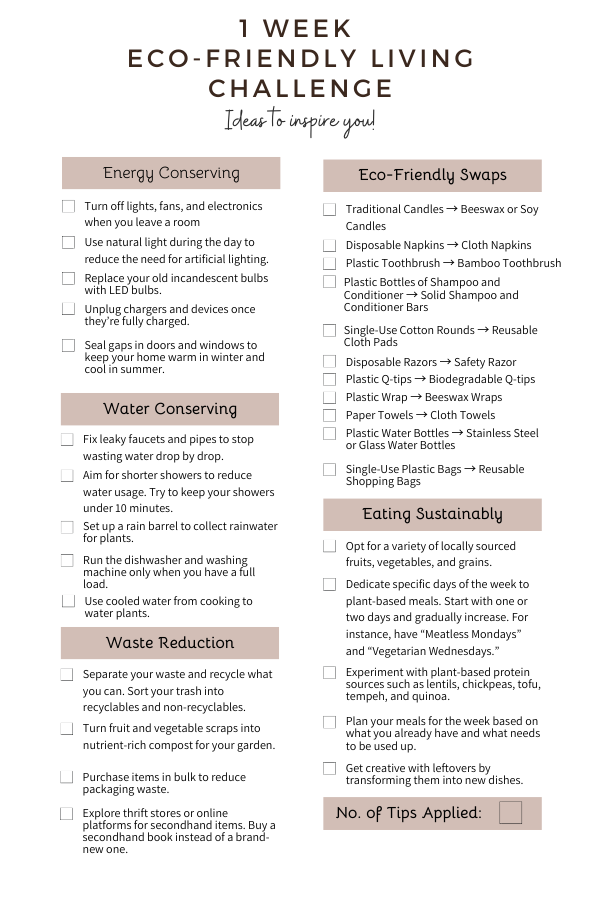
101+ Proven Tips for a Sustainable Life
Sustainable Habits at Home
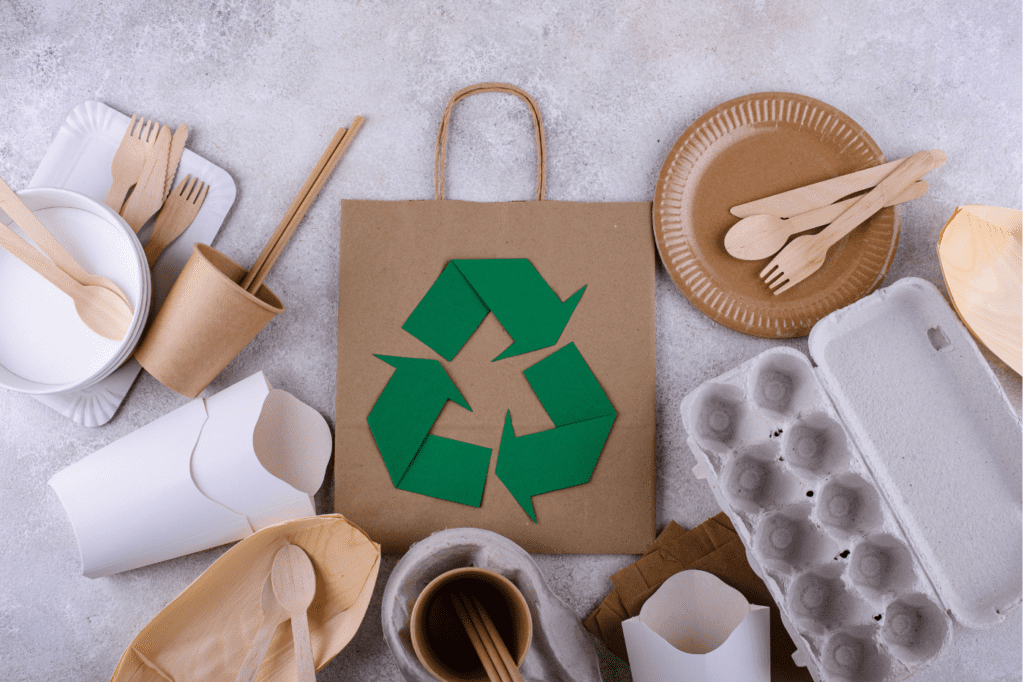
Energy Conservation and Efficiency
Saving energy at home is like saving pocket money – a little effort goes a long way! Here are simple tips to be an energy-saving superhero:
- Switch Off When Not Needed:
- Turn off lights, fans, and electronics when you leave a room. For example, when you leave for work, switch off the lights to save energy.
- Let the Sunlight In:
- Use natural light during the day to reduce the need for artificial lighting. Open your curtains wide during the day to let the sunshine light up your room.
- Energy-Efficient Bulbs:
- Use LED or CFL bulbs that use less energy and last longer. Replace your old incandescent bulbs with LED bulbs.
- Unplug Chargers:
- Unplug chargers and devices once they’re fully charged to avoid ‘phantom’ energy usage. When your phone is charged, unplug the charger from the socket.
- Seal Your Home:
- Seal gaps in doors and windows to keep your home warm in winter and cool in summer. Use weather stripping to seal gaps around doors and windows.
- Use Appliances Wisely:
- Wash clothes in full loads and air-dry them when possible. Wait until you have a full load of laundry before using the washing machine.
- Upgrade to Energy-Efficient Appliances:
- When it’s time, choose appliances with an Energy Star label. When buying a new refrigerator, choose one with the ENERGY STAR label.
- Cook Smart:
- Use lids while cooking to retain heat and save energy. When boiling water for pasta, cover the pot with a lid to make it boil faster.
- Optimize Heating and Cooling:
- Set your thermostat a bit lower in winter and a bit higher in summer. During winter, set your thermostat a few degrees lower than usual.
- Plant Trees:
- Strategically planting trees around your home can provide shade and keep your home cooler. Plant a tree on the west side of your house to provide shade during hot afternoons.
Water Conservation
Saving water is like saving the last cookie – it’s precious! Here’s how to be a water-saving champ at home:
- Fix Leaks:
- Fix leaky faucets and pipes to stop wasting water drop by drop. If you notice a leaky faucet, call a plumber to fix it.
- Shorter Showers:
- Aim for shorter showers to reduce water usage. Try to keep your showers under 10 minutes.
- Collect Rainwater:
- Set up a rain barrel to collect rainwater for plants. Place a barrel under your gutter’s downspout to collect rainwater.
- Only Run Full Loads:
- Run the dishwasher and washing machine only when you have a full load. Wait until you have enough dishes for a full load before running the dishwasher.
- Re-Use Cooking Water:
- Use cooled water from cooking to water plants. After boiling vegetables, let the water cool and use it for your houseplants.
- Water-Saving Showerhead:
- Use a low-flow showerhead to reduce water usage while showering. Install a low-flow showerhead to reduce water flow while maintaining good water pressure.
- Opt for a Broom:
- Use a broom instead of a hose to clean driveways and sidewalks. Instead of hosing down your driveway, sweep it to save water.
- Check Toilet for Leaks:
- Check for toilet leaks by putting food coloring in the tank; if it appears in the bowl without flushing, you have a leak. Drop food coloring in the toilet tank and wait to see if any color appears in the bowl without flushing.
- Water Plants Early or Late:
- Water plants early in the morning or late in the evening to reduce evaporation. Water your plants in the early morning to reduce water loss due to evaporation.
- Plant Drought-Tolerant Plants:
- Choose plants that need less water to thrive. Opt for plants like succulents and cacti that require less water.
Waste Reduction
Minimizing waste is like tidying up our space – it keeps things neat and helps the planet! Here’s how to reduce waste at home:
- Recycle Paper, Plastic, and Glass:
- Separate your waste and recycle what you can. Sort your trash into recyclables and non-recyclables.
- Compost Food Scraps:
- Turn fruit and vegetable scraps into nutrient-rich compost for your garden. Compost fruit and vegetable scraps to create a natural fertilizer for your garden.
- Say No to Single-Use Plastics:
- Use reusable bags, bottles, and containers instead. Bring your own reusable bag when shopping to reduce plastic bag usage.
- Buy in Bulk:
- Purchase items in bulk to reduce packaging waste. Buy pantry staples like rice and pasta in bulk to reduce packaging.
- Use a Reusable Mug:
- Bring your own mug for your daily coffee instead of using disposable cups. Carry a reusable coffee mug for your daily caffeine fix.
- Repurpose Items:
- Find new uses for old items before tossing them away. Turn an old tin can into a pen holder instead of throwing it away.
- Donate or Sell Unwanted Items:
- If you no longer need something, consider giving it to someone who can use it or sell it. Donate clothes you no longer wear to a local charity.
- Buy Secondhand:
- Explore thrift stores or online platforms for secondhand items. Buy a secondhand book instead of a brand-new one.
- Opt for Digital:
- Choose digital subscriptions instead of print magazines or newspapers. Subscribe to digital magazines instead of print versions to save paper.
- Mindful Shopping:
- Before making a purchase, ask yourself if it’s something you truly need and if it aligns with your values. Before buying a new gadget, ask yourself if it’s necessary and if it’s produced by an environmentally conscious company.
Sustainable Swap Ideas Room by Room

Living Room
- Traditional Candles → Beeswax or Soy Candles: Opt for candles made from natural materials that are renewable and produce less soot.
- Single-Use Decorative Items → Potted Plants: Instead of disposable decor, bring in potted plants to add a touch of nature to your living space.
- Plastic Frames → Reclaimed Wood or Metal Frames: Choose picture frames made from reclaimed or recycled materials for a sustainable alternative.
- Synthetic Rugs → Natural Fiber Rugs: Consider rugs made from materials like jute, sisal, or hemp, which are biodegradable and eco-friendly.
- Disposable Napkins → Cloth Napkins: Make the switch to reusable cloth napkins to reduce paper waste.
- Conventional Cleaning Products → DIY or Eco-Friendly Cleaners: Create your own cleaning solutions or choose environmentally friendly alternatives to reduce the use of harmful chemicals.
- Throwaway Decorative Pillows → Upcycled or Organic Fabric Pillows: Choose pillows made from organic or upcycled fabrics to reduce environmental impact.
- Non-Energy Efficient Light Bulbs → LED Bulbs: Swap out traditional bulbs for energy-efficient LED options to save electricity.
- Artificial Air Fresheners → Essential Oil Diffusers: Opt for essential oil diffusers to add a pleasant fragrance to your living space without the use of synthetic air fresheners.
- Disposable Batteries → Rechargeable Batteries: Invest in rechargeable batteries to reduce the environmental impact of disposable ones.
Bathroom
- Plastic Toothbrush → Bamboo Toothbrush: Make the switch to a bamboo toothbrush, which is biodegradable and eco-friendly.
- Disposable Razors → Safety Razor: Choose a durable safety razor with replaceable blades to reduce plastic waste.
- Plastic Bottles of Shampoo and Conditioner → Solid Shampoo and Conditioner Bars: Opt for package-free, solid bars to minimize plastic packaging.
- Single-Use Cotton Rounds → Reusable Cloth Pads: Use reusable cloth pads for makeup removal or skincare instead of disposable cotton rounds.
- Liquid Hand Soap in Plastic Bottles → Refillable Soap Dispenser: Reduce plastic waste by using a refillable soap dispenser with bulk liquid soap.
- Synthetic Loofahs → Natural Loofah or Washcloth: Choose natural loofahs or washcloths over synthetic ones for exfoliation.
- Disposable Menstrual Products → Reusable Menstrual Cups or Cloth Pads: Make the switch to reusable menstrual products to reduce waste.
- Plastic Shower Curtain → Hemp, Linen or Cotton Shower Curtain: Choose a shower curtain made from natural materials that are less harmful to the environment.
- Disposable Wipes → Cloth Wipes: Use reusable cloth wipes instead of disposable wipes for various purposes.
- Plastic Q-tips → Biodegradable Q-tips: Opt for Q-tips made from sustainable materials that are biodegradable.
You might also enjoy this curatıon:
7 AMAZING ZERO WASTE SHAMPOOS AND CONDITIONERS FOR 2024
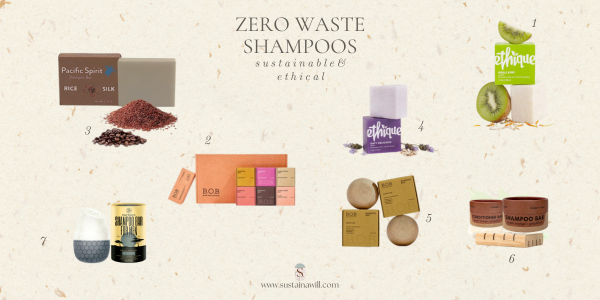
Kitchen
- Plastic Food Storage Containers → Glass or Stainless Steel Containers: Choose durable glass or stainless steel containers for storing food instead of disposable plastic ones.
- Plastic Wrap → Beeswax Wraps: Use beeswax wraps as a sustainable alternative to plastic wrap for covering food.
- Disposable Coffee Cups → Reusable Coffee Mug: Bring your reusable coffee mug to reduce the use of disposable cups.
- Paper Towels → Cloth Towels: Make the switch to reusable cloth towels for cleaning and wiping surfaces.
- Plastic Utensils → Reusable Utensils: Carry reusable utensils with you to avoid using disposable ones when eating out.
- Single-Use Plastic Bags → Reusable Shopping Bags: Use durable, reusable bags for grocery shopping to reduce plastic waste.
- Plastic Straws → Stainless Steel or Bamboo Straws: Choose reusable straws made from stainless steel or bamboo instead of disposable plastic ones.
- Non-Stick Cookware with Harmful Coatings → Cast Iron or Stainless Steel Cookware: Opt for cookware with durable and safe coatings like cast iron or stainless steel.
- Disposable Plates and Cups → Biodegradable Plates and Cups: Use biodegradable plates and cups made from materials like sugarcane or bamboo for outdoor events or picnics.
- Plastic Water Bottles → Stainless Steel or Glass Water Bottles: Choose reusable water bottles made from stainless steel or glass to reduce single-use plastic consumption.
Nursery
- Disposable Diapers → Cloth Diapers: Make the switch to cloth diapers for a more sustainable and cost-effective diapering option.
- Plastic Baby Bottles → Glass or Stainless Steel Bottles: Choose glass or stainless steel baby bottles instead of plastic ones.
- Disposable Baby Wipes → Cloth Wipes: Use reusable cloth wipes for diaper changes instead of disposable wipes.
- Plastic Toys → Wooden or Cloth Toys: Opt for toys made from natural materials like wood or cloth, which are often more durable and eco-friendly.
- Synthetic Bedding → Organic Cotton or Bamboo Bedding: Choose bedding made from organic cotton or bamboo for a more sustainable and chemical-free option.
- Plastic High Chair → Wooden High Chair: Choose a high chair made from wood instead of plastic for a more sustainable option.
- Single-Use Bibs → Reusable Bibs: Use washable and reusable bibs instead of disposable ones.
- Disposable Nursing Pads → Washable Nursing Pads: Make the switch to washable nursing pads for a more sustainable and cost-effective option.
- Plastic Changing Table → Sustainable Changing Table: Consider a changing table made from sustainable materials like bamboo or recycled wood.
- Plastic Baby Bathtub → Eco-Friendly Baby Bathtub: Opt for baby bathtubs made from eco-friendly materials, such as recycled plastic or sustainable alternatives.
Reducing Plastic Use
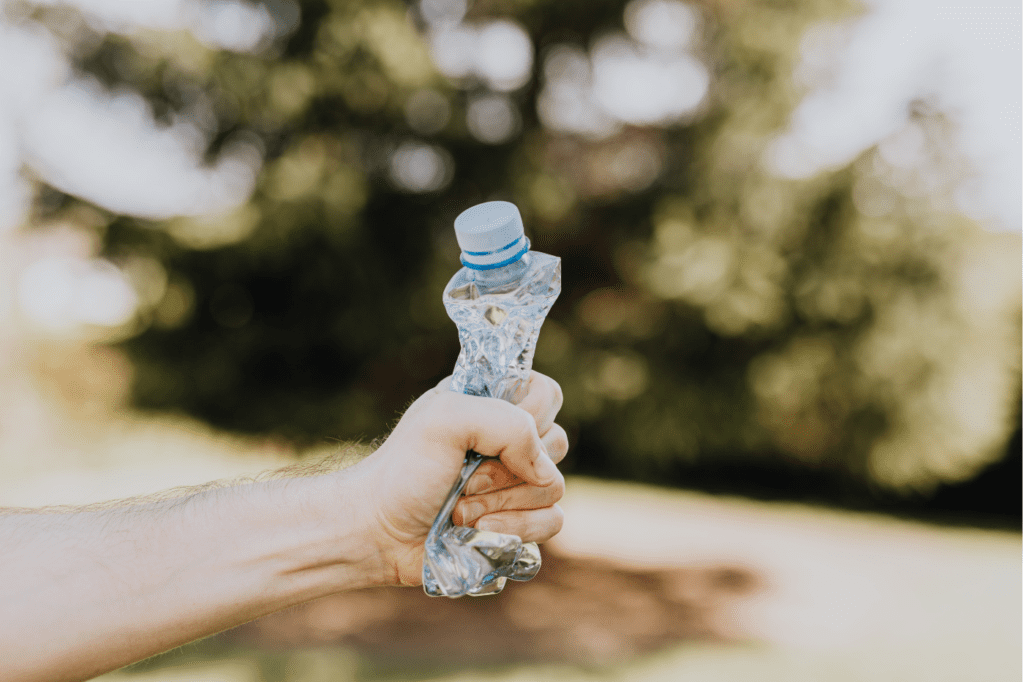
Plastic-Free Living
Cutting down on plastic is like reducing junk food – it’s good for you and the planet! Here are practical tips to lead a plastic-free life:
- Reusable Shopping Bags:
- Carry reusable bags when you shop to avoid plastic bags. For example, keep a foldable bag in your purse or car for unexpected purchases.
- Stainless Steel Water Bottles:
- Use a stainless steel water bottle to stay hydrated without single-use plastic bottles. Fill up your reusable bottle at home before heading out. For instance, fill up your stainless steel bottle before going for a walk or to the gym.
- Say No to Plastic Straws:
- Skip the straw or opt for reusable ones made of metal, bamboo, or silicone. If you need a straw, consider carrying a reusable one in your bag. For instance, when ordering a drink at a restaurant, politely decline the straw.
- Reusable Containers:
- Pack your lunches in reusable containers instead of using plastic wrap or bags. Use glass or metal containers for packing meals. For example, store your leftovers in a glass container instead of plastic wrap.
- Choose Products with Less Packaging:
- Opt for products with minimal or eco-friendly packaging when shopping. Buy in bulk or choose products with compostable or recyclable packaging. For instance, buy loose fruits and vegetables instead of pre-packaged ones.
- Avoid Disposable Cutlery:
- Carry your own reusable cutlery when eating out or ordering takeout. Keep a set of reusable utensils in your bag or car. For example, carry a small set of reusable cutlery in your bag so you’re always prepared.
- Make Your Own Cleaning Products:
- Create your cleaning products to reduce plastic packaging from commercial cleaning supplies. Make DIY cleaning products using common household items. For instance, create an all-purpose cleaner using vinegar and water.
- Refill Stations:
- Look for stores with refill stations for items like shampoo, detergent, and cleaning products. Utilize refill stations to reduce plastic waste. For example, refill your shampoo bottle at a store that offers bulk shampoo.
- Be Mindful of Packaging:
- Choose products with minimal plastic packaging or packaging that can be recycled. Check product labels for recyclable or biodegradable packaging. For instance, opt for products with the least amount of plastic packaging.
- Educate and Share:
- Spread awareness about reducing plastic use within your community and social circles. Share tips and educate others about the importance of plastic reduction. For example, share your plastic reduction journey on social media to inspire friends and family.
Alternative Packaging
Exploring sustainable packaging options is like finding a healthier snack – better for you and the environment! Let’s delve into alternative packaging choices:
- Glass Containers:
- Choose products packaged in glass containers that can be easily reused or recycled. For example, select jams or sauces that come in glass jars and repurpose the jars for storage.
- Cardboard and Paper Packaging:
- Opt for products with packaging made from cardboard or paper, as these are recyclable and biodegradable. For instance, choose cereals or snacks that come in cardboard boxes.
- Biodegradable Plastics:
- Look for products packaged in biodegradable plastics made from plant-based materials. For example, some packaging peanuts are made from cornstarch and can be dissolved in water.
- Fabric Wraps:
- Use fabric wraps or cloths to package food instead of plastic wraps, promoting zero waste. For instance, wrap sandwiches in cloth napkins for school or work lunches.
- Edible Packaging:
- Explore edible packaging options made from materials like rice, seaweed, or edible starch. For example, some food items come wrapped in edible rice paper.
- Packaging-Free Stores:
- Shop at stores that promote zero packaging, allowing you to bring your own containers. For instance, some stores allow you to bring your own jars or containers to fill up with products like grains or pasta.
- Beeswax Wraps:
- Use beeswax wraps as a reusable and eco-friendly alternative to plastic wraps for food storage. For example, use beeswax wraps to cover leftovers or wrap sandwiches.
- Plant-Based Packaging:
- Choose products with packaging made from plant-based materials like sugarcane or cornstarch. For instance, some takeaway containers are made from sugarcane fibers.
- Metal Tins or Aluminum Packaging:
- Opt for products that come in metal tins or aluminum packaging that can be recycled. For example, some tea comes in metal tins that can be reused for storing small items.
- Upcycled Packaging:
- Support products packaged using upcycled materials, giving a second life to waste. For instance, some companies use upcycled materials like old newspapers or fabrics for packaging.
Embrace these tips to reduce plastic use and explore sustainable packaging options. Small changes lead to a big impact!
Sustainable Transportation
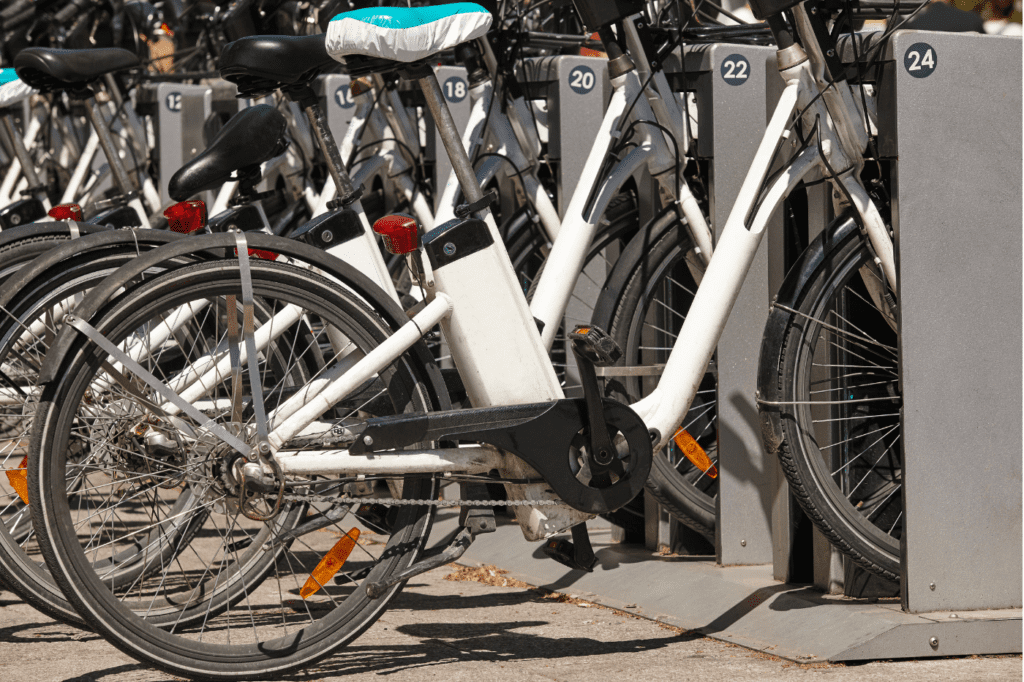
10 Tips for Eco-Friendly Commuting and Travel
Traveling sustainably is like choosing the scenic route – it’s better for the environment and more enjoyable! Here are simple tips for greener commuting and travel:
- Public Transportation:
- Use buses, trams, subways, or trains to reduce individual vehicle emissions. For instance, take the subway to work instead of driving.
- Carpool or Ride-Share:
- Share rides with others heading in the same direction to reduce the number of cars on the road. For example, coordinate a carpool with coworkers who live nearby.
- Walking and Biking:
- Walk or cycle for short distances to cut down on emissions and stay active. For instance, walk or bike to nearby places like the grocery store.
- Hybrid or Electric Vehicles:
- Consider purchasing a hybrid or electric car for lower carbon emissions. For example, invest in a hybrid vehicle for your daily commute.
- Maintain Your Vehicle:
- Keep your vehicle well-maintained for optimal fuel efficiency and reduced pollution. Regularly service your car to ensure it’s running efficiently.
- Plan Your Trips:
- Combine errands into one trip to minimize unnecessary driving and save fuel. For instance, plan your grocery shopping on the way back from work.
- Use Eco-Friendly Ride-Sharing Apps:
- Choose ride-sharing apps that allow you to opt for eco-friendly vehicle options. Use apps that offer electric or hybrid vehicle options.
- Choose Direct Routes:
- Opt for direct routes to reach your destination faster and use less fuel. For example, use GPS apps to find the quickest route.
- Offset Your Carbon Emissions:
- Consider carbon offset programs to balance the environmental impact of your travel. Calculate your carbon emissions and invest in offset programs.
- Explore Slow Travel:
- Take time to explore a destination thoroughly, reducing the need for frequent transportation. For instance, choose longer stays in one place rather than hopping between multiple destinations.
Implementing these eco-friendly commuting and travel tips will not only reduce your carbon footprint but also make your journeys more enjoyable and mindful of the environment!
Sustainable Food Choices
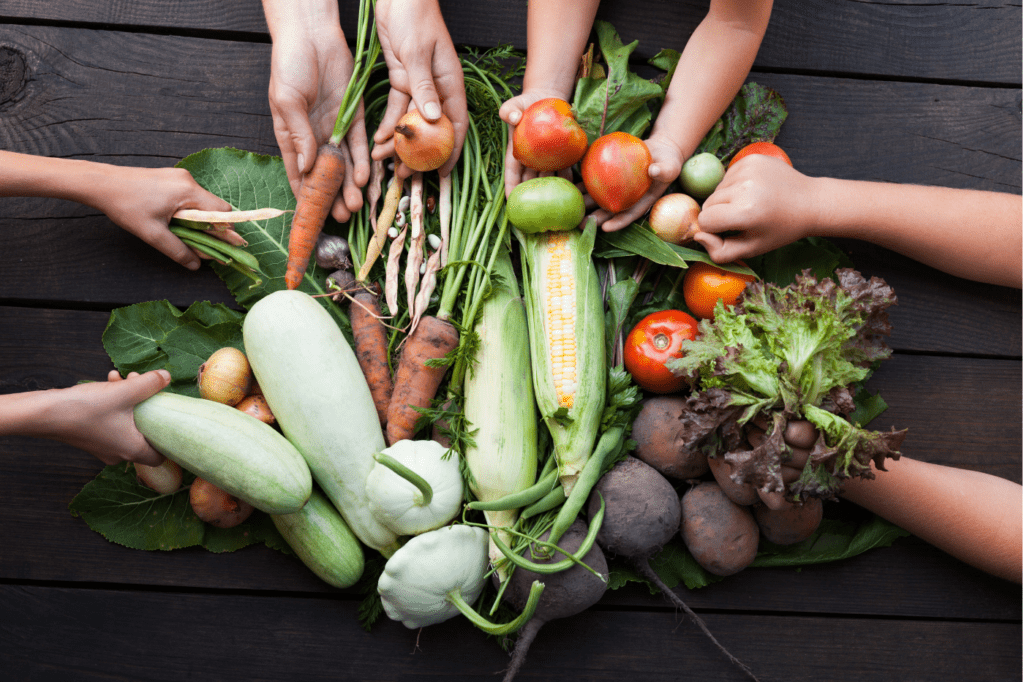
Eating Sustainably
Eating sustainably is like nourishing both your body and the planet. Here’s what a sustainable diet looks like in 2024:
- Diverse and Local Produce:
- Opt for a variety of locally sourced fruits, vegetables, and grains. For instance, buy seasonal produce from local farmers’ markets.
- Mindful Meat Consumption:
- Reduce meat intake and choose sustainably sourced options. Consider organic, grass-fed, or pasture-raised meats. For example, have “meatless Mondays” and choose ethically sourced meats for other days.
- Seafood Responsibly Harvested:
- Choose sustainably sourced seafood to support healthy oceans. Look for eco-friendly labels when purchasing seafood. For instance, choose seafood certified by organizations like MSC (Marine Stewardship Council).
- Limit Processed Foods:
- Reduce consumption of highly processed foods and opt for whole, unprocessed alternatives. Cook meals at home using fresh ingredients. For example, prepare homemade snacks like trail mix instead of buying packaged ones.
- Waste Less Food:
- Plan meals, use leftovers creatively, and compost food scraps to minimize food waste. Monitor expiration dates and organize your pantry and fridge. For instance, create a weekly meal plan and buy only what you need to avoid excess perishable items.
Plant-Based Eating
Incorporating more plant-based meals into your diet is like giving the planet a green hug. Here are five tips to help you embrace plant-based eating:
- Meatless Days:
- Dedicate specific days of the week to plant-based meals. Start with one or two days and gradually increase. For instance, have “Meatless Mondays” and “Vegetarian Wednesdays.”
- Explore Plant Proteins:
- Experiment with plant-based protein sources such as lentils, chickpeas, tofu, tempeh, and quinoa. For example, make a hearty lentil soup or a chickpea curry.
- Veggie-Centric Meals:
- Build your meals around vegetables, grains, and legumes. Make vegetables the star of your plate and complement them with grains and a protein source. For instance, prepare a colorful stir-fry with a variety of veggies.
- Discover Meat Alternatives:
- Explore meat alternatives like veggie burgers, plant-based sausages, or meatless meatballs. Incorporate them into your favorite dishes. For example, make tacos using plant-based meat alternatives.
- Educate Yourself:
- Learn about the environmental and health benefits of a plant-based diet. Educate yourself on how reducing meat consumption positively impacts the planet. Watch documentaries or read books to gain more insights.
Reducing Food Waste
Minimizing food waste is like giving back to the Earth and being mindful of your resources. Here are practical tips to reduce food waste in your kitchen:
- Meal Planning:
- Plan your meals for the week based on what you already have and what needs to be used up. Create a shopping list accordingly. For instance, plan a stir-fry night to use up leftover vegetables.
- Proper Storage:
- Store food properly to extend its shelf life. Use airtight containers for leftovers, and store fruits and vegetables appropriately to maintain freshness. For example, store leafy greens in airtight containers with a paper towel to absorb excess moisture.
- Use Leftovers Creatively:
- Get creative with leftovers by transforming them into new dishes. For instance, turn yesterday’s roasted vegetables into a delicious vegetable soup.
- Composting:
- Set up a compost bin for food scraps and other organic waste. Use the compost for your garden to enrich the soil. For example, compost fruit and vegetable peels instead of throwing them away.
- Monitor Expiry Dates:
- Regularly check the expiry dates of items in your pantry and fridge. Use items that are close to expiration to avoid wastage. For instance, plan a meal using canned goods approaching their expiry dates.
By adopting these sustainable food choices, you not only contribute to a healthier planet but also nourish yourself in a mindful and eco-friendly way.
Sustainable Shopping and Consumerism

Ethical and Responsible Consumerism
Practicing ethical and responsible consumerism is like voting for the kind of world you want with your wallet. Here are the top 10 brands known for ethical and sustainable shopping:
- Patagonia:
- A company committed to environmental and social responsibility, known for its outdoor clothing and gear.
- Eileen Fisher:
- Focuses on sustainable, high-quality fashion, promoting timeless designs and eco-friendly practices.
- TOMS:
- Famous for its “One for One” model, where a pair of shoes is donated for every pair sold, and it extends to eyewear and coffee too.
- Allbirds:
- Creates sustainable and comfortable shoes using eco-friendly materials like wool and eucalyptus.
- Reformation:
- An eco-conscious brand that designs and manufactures clothing with sustainable practices and materials.
- Pact:
- Offers organic cotton clothing and basics produced ethically and sustainably.
- United by Blue:
- Known for its commitment to removing one pound of trash from oceans and waterways for every product sold.
- ABLE:
- Focuses on ending generational poverty by providing economic opportunities for women. They create clothing, shoes, and accessories.
- Veja:
- Produces environmentally friendly sneakers using fair-trade and organic materials.
- Thinx:
- Offers sustainable period underwear and is committed to breaking taboos surrounding menstruation.
Secondhand and Thrift Shopping
Secondhand and thrift shopping is like treasure hunting – you never know what gems you might find! Here are 10 tips to shop secondhand and why it matters:
- Explore Thrift Stores: Check out local thrift stores for a diverse selection of clothing, furniture, and accessories at budget-friendly prices.
- Online Platforms: Utilize online platforms like eBay, Poshmark, or Depop to find secondhand gems. These platforms often have a wide range of pre-loved items.
- Visit Consignment Shops: Consignment stores often carry high-quality, gently-used items. They’re a great option for finding unique pieces.
- Swap with Friends: Host a clothing swap with friends or family. It’s a fun way to refresh your wardrobe without spending money.
- Garage Sales and Flea Markets: Explore local garage sales and flea markets for hidden treasures. Bargain hunting can be both exciting and sustainable.
- Attend Vintage Markets: Look for local vintage markets or fairs. They often showcase curated collections of secondhand items with a unique flair.
- Community Exchange Programs: Join community exchange programs or groups where people share or trade items they no longer need.
- Upcycling Projects: Get creative with upcycling old clothing or furniture. You can transform outdated items into something new and personalized.
- Quality Over Quantity: Prioritize quality when shopping secondhand. Investing in well-made items ensures they last longer, reducing the need for frequent replacements.
- Educate Yourself: Learn about sustainable and ethical brands. Some brands focus on creating products with longevity and environmental consciousness, even if they’re not secondhand.
DIY and Upcycling
Embrace DIY and upcycling as a way to infuse your personality into everyday items. Here are 10 creative tips to upcycle everyday items:
- Repurpose Glass Jars:
- Use glass jars to store spices, create candle holders, or organize small items like buttons.
- Transform Old T-Shirts:
- Turn old t-shirts into tote bags, braided rugs, or even pillow covers.
- Create Planters from Containers:
- Use old containers like tin cans or plastic bottles to create unique planters for your indoor plants.
- Upcycle Wooden Pallets:
- Transform wooden pallets into furniture like coffee tables, bookshelves, or outdoor seating.
- Design Magazine Collages:
- Cut out images from magazines to create beautiful collages and use them to decorate your space.
- Craft Wine Cork Trivets:
- Glue wine corks together to make a stylish and functional trivet for your kitchen.
- Make Fabric Scraps Bunting:
- Use fabric scraps to create colorful buntings for parties or to decorate a room.
- Sew Cloth Napkins from Old Clothes:
- Cut old clothes into squares and hem the edges to create reusable cloth napkins.
- Craft Book Page Art:
- Repurpose old books or damaged pages into art by framing them or creating unique wall decor.
- Create Repurposed Jewelry:
- Use broken or unused jewelry pieces to design new and unique jewelry items.
By adopting ethical consumerism, shopping secondhand, and engaging in DIY and upcycling, you contribute to a more sustainable and creative lifestyle. Happy shopping and crafting!
Gardening and Green Spaces
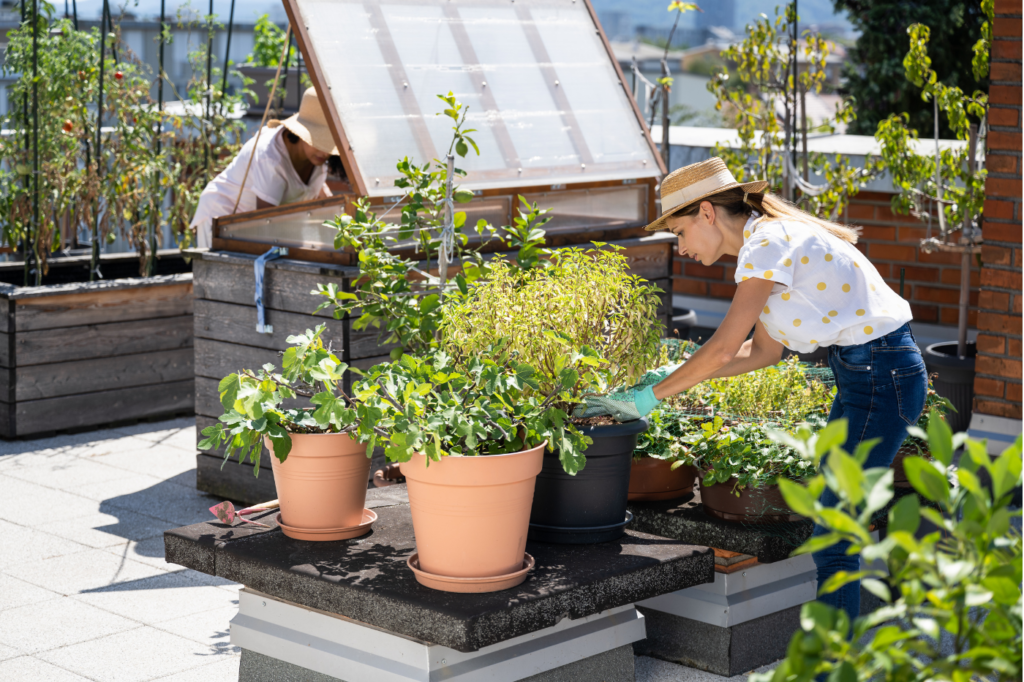
Urban Gardening
Urban gardening is like bringing a piece of the countryside into the city. Here are five tips to start your own urban garden:
- Evaluate Your Space:
- Assess the available space in your home – balconies, rooftops, windowsills, or any nooks and crannies suitable for gardening.
- Choose Suitable Plants:
- Opt for plants that thrive in the limited space and sunlight of an urban environment, such as herbs, leafy greens, tomatoes, and compact fruit trees.
- Select the Right Containers:
- Use containers that fit your space and allow proper drainage. Consider recycled containers or vertical planters to maximize space.
- Soil and Fertilizers:
- Use quality soil and organic fertilizers to ensure your plants have the necessary nutrients for healthy growth in a confined space.
- Watering and Maintenance:
- Establish a regular watering schedule and maintain your garden by pruning, fertilizing, and addressing any issues promptly.
Creating a Sustainable Garden
Creating a sustainable garden is like nurturing nature in your backyard. Here are five tips for an eco-friendly garden:
- Water Conservation:
- Collect rainwater in barrels and use a drip irrigation system to minimize water waste and keep your garden hydrated efficiently.
- Compost and Mulch:
- Start a compost pile to recycle organic waste and create nutrient-rich compost for your garden. Use mulch to retain moisture and suppress weeds.
- Natural Pest Control:
- Encourage beneficial insects like ladybugs and lacewings to control pests naturally. Plant companion crops that repel harmful insects.
- Native and Drought-Tolerant Plants:
- Opt for native plants that are adapted to your region’s climate, reducing the need for excessive watering and maintenance.
- Reduce Chemical Usage:
- Minimize the use of synthetic pesticides and herbicides. Instead, opt for natural alternatives like neem oil or insecticidal soaps.
Embrace urban gardening to make the most of your space and cultivate a sustainable garden for a greener, more vibrant living environment!
The Sustainable Family
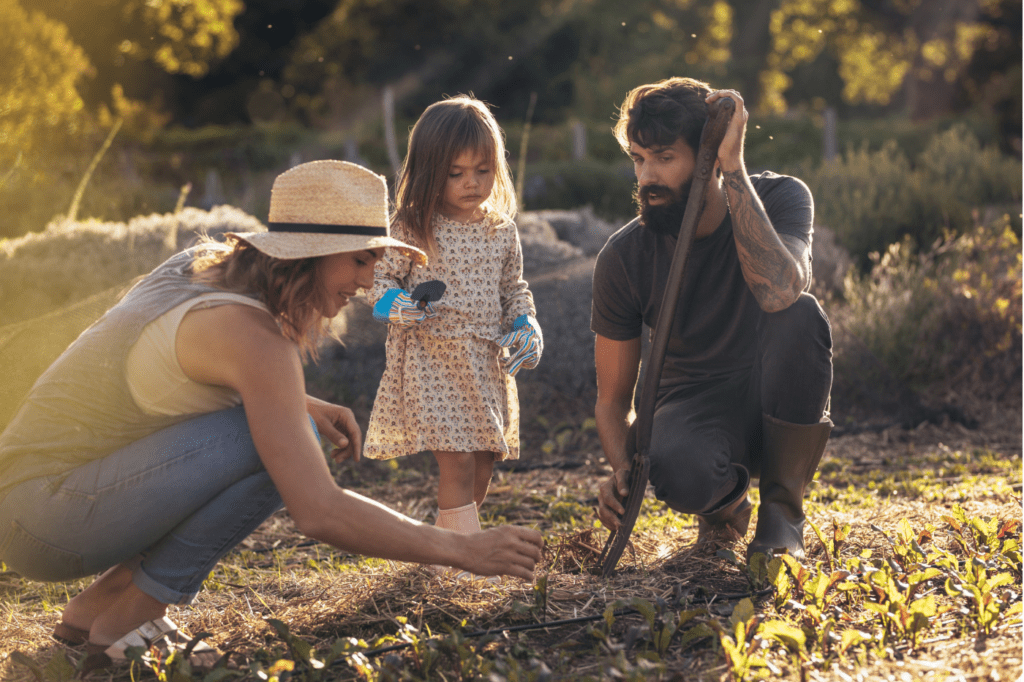
10 Tips to Encourage Your Kids to Live More Sustainably
Teaching your children about sustainability is like planting seeds for a greener future. Here are 10 tips to instill sustainable habits in your kids:
- Lead by Example:
- Show sustainable practices in your daily life so your children can observe and learn.
- Explain the Why:
- Help your kids understand why it’s essential to conserve resources and protect the environment.
- Involve Them in Gardening:
- Allow your kids to participate in gardening and teach them about growing their own food.
- Reduce, Reuse, Recycle:
- Educate your kids about the importance of reducing waste, reusing items, and recycling materials.
- Energy and Water Consciousness:
- Teach them to turn off lights, appliances, and faucets when not in use to save energy and water.
- Nature Walks and Outings:
- Take your kids on nature walks to help them appreciate the beauty of nature and understand the need to protect it.
- Explain the Impact of Plastic:
- Educate your children about the harmful effects of plastic pollution and encourage using reusable alternatives.
- Engage in Sustainable Crafts:
- Encourage them to create art and crafts using recycled materials, fostering creativity and sustainability.
- Discuss Climate Change:
- Have age-appropriate discussions about climate change and the role individuals play in mitigating its effects.
- Volunteer for Environmental Causes:
- Participate as a family in community cleanups or tree planting events to instill a sense of responsibility towards the environment.
10 Tips for Sustainable Parenting
Balancing parenting with sustainability is like nurturing both your children and the planet. Here are 10 tips for sustainable parenting:
- Mindful Consumption:
- Choose eco-friendly baby products, opt for secondhand items, and buy only what you need to reduce waste.
- Cloth Diapers and Baby Wipes:
- Use cloth diapers and wipes to reduce the environmental impact of disposable ones.
- Breastfeeding:
- Whenever possible, breastfeed as it’s a natural, sustainable way to feed your baby.
- DIY Baby Food:
- Make your baby food using fresh, local produce to reduce packaging waste and promote a healthy diet.
- Eco-Friendly Toys:
- Choose toys made from sustainable materials like wood or recycled plastic to minimize plastic waste.
- Walk or Cycle:
- Use strollers or carriers and opt for walking or cycling instead of using a car for short trips.
- Teach Sustainable Habits:
- Instill simple sustainable habits like turning off lights and saving water in your children from an early age.
- Outdoor Activities:
- Encourage outdoor play and activities to foster a love for nature and physical exercise.
- Host Eco-Friendly Parties:
- Opt for reusable decorations and tableware for birthday parties to reduce single-use plastic waste.
- Educate and Involve:
- Educate your children about sustainability and involve them in decision-making processes regarding sustainable choices at home.
Sustainability Tips for Busy People

Living sustainably even with a busy lifestyle is like finding the right balance in a fast-paced world. Here are 10 sustainability tips for busy individuals:
- Meal Planning:
- Plan your meals for the week to reduce food waste and make efficient use of ingredients.
- Opt for Public Transport:
- Use public transportation, carpool, or bike to work to reduce your carbon footprint.
- Smart Energy Usage:
- Invest in smart devices to automate and optimize energy usage in your home.
- Remote Work:
- Whenever possible, work remotely to minimize daily commuting and reduce emissions.
- Conscious Shopping:
- Make thoughtful and well-planned purchases to reduce impulse buying and unnecessary waste.
- Virtual Meetings:
- Opt for virtual meetings instead of physical ones to save time, resources, and energy.
- Reusable on the Go:
- Carry a reusable water bottle, coffee cup, and shopping bag to minimize single-use plastic usage.
- Digital Document Management:
- Reduce paper usage by digitizing documents and embracing digital communication.
- Recycle Electronics:
- Recycle old electronics responsibly to prevent e-waste and contribute to a circular economy.
- Minimalist Lifestyle:
- Embrace a minimalist lifestyle, focusing on quality over quantity, to reduce clutter and excessive consumption.
Conclusion
Embracing sustainability isn’t merely a choice; it’s a responsibility we owe to our planet and future generations. Every small action we take, be it reducing plastic use, conserving energy, or teaching our children the importance of sustainable living, has a collective impact.
Let’s unite in this journey towards a greener, healthier world. Start today, in your own way, and let’s leave a legacy of sustainability for the world we share. Together, we can make a lasting difference.
Join us in this sustainable endeavor; the Earth is calling, and your actions matter!








